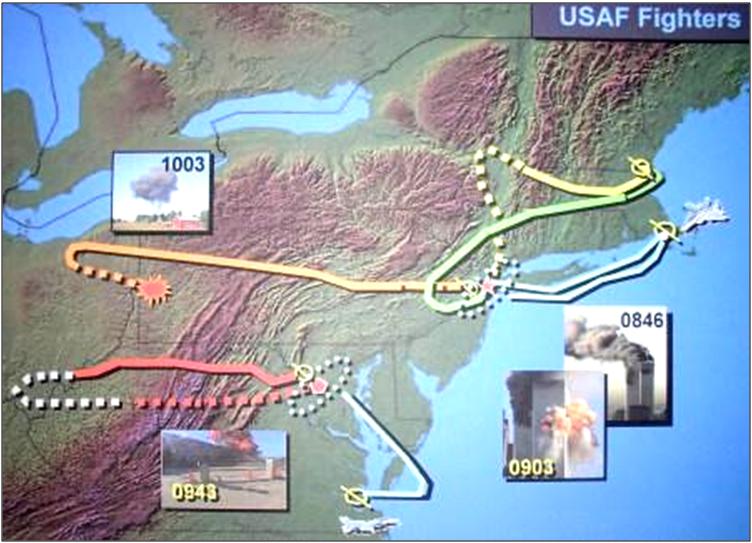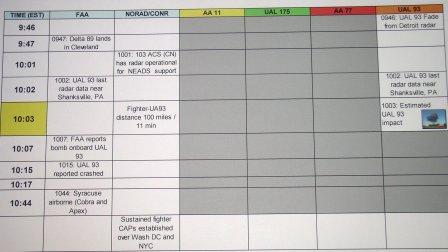Several correspondents have alerted me to recent interest in the Bobcats by current day 9-11 researchers. My first instinct was to simply dismiss this interest as transient, one of many analytical cul-de-sacs concerning the events of 9-11. However, as I reviewed the files and recalled my own work it occurred to me that the Bobcats are as good a subject as any to address the apparent dichotomy between the work of the Commission Staff and the notion held by some that the work of the Commission was somehow deficient.
The Commission Staff considered many things in its work. Anyone who has perused the substantial Commission files posted to the web by NARA, History Commons, and 9-11myths will recognize that the effort was massive, diverse, and often complicated. As a reminder, at most, NARA has released only 35% of Commission files, mostly desk files and MFRs. Still to come are the paper files (the originals received via document requests, both classified and unclassified) the electronic files on the classified and unclassified servers, and the audio files, both those received and those from our recorded interviews.
Snapshots of the Commission’s work are prone to misinterpretation. In the introduction to the Scott Trilogy I refer to this tendency as the imposition of post facto understanding and awareness on facto and pre-facto conditions. Discrete pieces of staff work are just that, pieces of a vastly larger puzzle; sometimes they fit, sometimes they don’t. Consideration of the Bobcats is one such piece of work, one that seemed to fit, yet didn’t.
The Bobcats, briefly an item of interest
The Bobcats became, briefly, an item of interest to the Commission Staff because of a single analytical question. Given that the military was a significant daily user of the nation’s airspace; and given that the formal air defense response was not effective; and given that FAA controllers vectored the Air National Guard C-130H, Gofer 06, to follow AA 77; what, if any, other military aircraft already in the air might have been used in some manner in response to the attack on the nation’s capital?
Primary source (radar and air traffic control transmissions) analysis revealed five military aircraft airborne in the area of the Pentagon, shown in this circa July 2003 staff workup.
The depiction is a screen print of 84th RADES radar data filtered to show specific aircraft and all primary returns in the DC area for the 13 minute period beginning at 9:25. “Sword 1” is actually “Word 31.”
The Bobcats
Radar files and air traffic control communications clearly show that a pair of aircraft in trail formation, Bobcat 14 and Bobcat 17, transited the DC area northeast to southwest in the same time frame that AA77 was approaching the area from the West.  This image depicts their transit as recorded in 84th RADES files. Their path is consistent with the established flight plan as depicted on en route flight strips.
This image depicts their transit as recorded in 84th RADES files. Their path is consistent with the established flight plan as depicted on en route flight strips.
According to ZDC flight strips the Bobcats were a scheduled flight of T-2 aircraft from Dover Air Force Base to Knoxville, TN. The T-2 is a two-seat jet trainer used by the Navy.
The pair took off around 9:15 and headed westerly to a navigational point near Baltimore at which time they turned south and checked in with DCA TRACON, Bobcat 14 at 9:31:30 and Bobcat 17 at 9:32:16. They proceeded through DCA airspace and were handed off to ZDC on a heading of 245; Bobcat 14 at 9:35 and Bobcat 17 seven minutes later. There is nothing unusual about their flight plan, their route which followed the flight plan, or their presence in DC airspace.
No Involvement
There is no primary or secondary source information that links the Bobcats in any way to events of the day. They were simply two more aircraft in the sky that just happened to be military aircraft. They did not dwell in the area, were at altitude, and were not an issue to pursue. DCA TRACON did not vector them when controllers learned at 9:33 of an unknown aircraft approaching. Gofer 06 was the better, in fact only, choice. And that answered the analytical question.
Another example of a snapshot
In an MFR addendum after our visit to Reagan National I wrote the following: “[Note: flight strips and other information indicate that Bobcat 14 and Bobcat 17 originated out of Dover Air Force Base in Delaware. JSS radar data shows that they flew in trail at 21,000 feet and were overhead during the last few minutes of the flight of American Air 77. It is possible, but not confirmed, that they were Air Force corporate passenger jets.]”
That estimate was based on the fact the flight originated from an Air Force Base, that an Air Force squadron used the Bobcat call sign, and that FAA in the cover sheet of the DCA TRACON partial transcript labeled them as Air Force. Retrospectively, knowledgeable Air Force sources inform me that the fact that the flight was “TACAN” only is sufficient to rule out that they were Air Force passenger aircraft. Those sources also inform me that the flight strips clearly indicate these were not VIP aircraft.
A question begged, what about the other three hijacked aircraft?
For those who are wondering about the other hijacked flights, here is the answer. I recall checking the radar concerning AA 11 and UA 175. The fact that I did not make screen prints is a strong indication that I found nothing remarkable. I did, however, make a screen print for UA 93 but the analytical question was different.
Given the Rumsfeld statement and given the speculation that UA 93 was shot down, what planes were in the vicinity of UA 93 in its last moments? A circa summer 2003 staff workup, UA 93 crash site based on 84th RADES radar files, shows the spatial and time relationship among UA 93, Gofer 06, and the Falcon jet vectored by air traffic control to use its GPS to obtain the crash site coordinates, which it did. The slow moving aircraft, labeled 0572C and tracking northward, was the only other plane in the general area; it was not a factor.
In sum
With the crystal clarity of 20-20 hindsight we can establish that the Bobcats were military jets on a routine, pre-scheduled flight. They were not an issue concerning the events of that morning.
There will not be a test.










